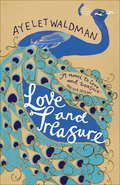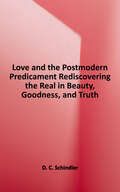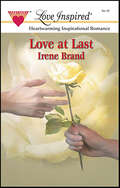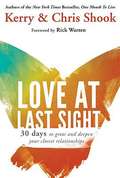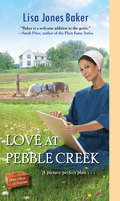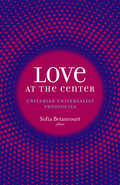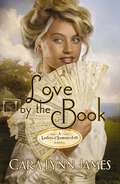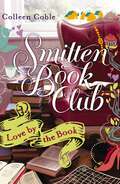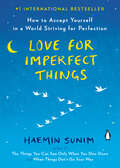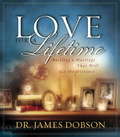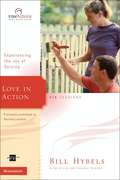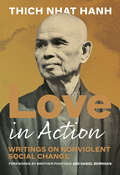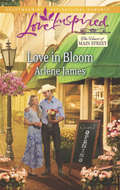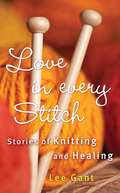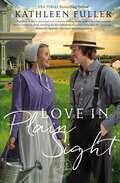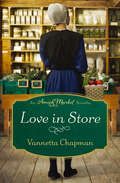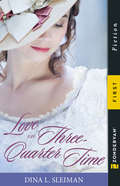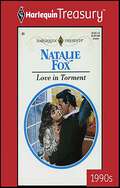- Table View
- List View
Love and Treasure
by Ayelet Waldman'A NOVEL TO LOVE AND TREASURE' PHILIPPA GREGORY'REMARKABLE' MICHAEL ONDAATJE'POIGNANTLY MOVING' JOYCE CAROL OATES Salzburg, 1946. A fugitive train loaded with the plunder of a doomed people. A dazzling, jewel-encrusted, peacock-shaped pendant. And three men - an American lieutenant who fought in WWII, an Israeli-born dealer of Nazi plunder, and a pioneering psychiatrist in fin-de-siècle Budapest - who find their carefully-wrought lives turned upside-down by three fierce women, each locked in a struggle against her own history and the history of their times. Spanning continents and a century marked by war and revolution, Love and Treasure is by turns funny and tragic, thrilling and harrowing, mapping the darkness of a shattered Europe against the heartbreak of a modern New Yorker. Told through the prism of the peacock pendant, the novel charts the ebb and flow of history, fate and fortune from 1914 Budapest to present-day New York. And at the centre of Love and Treasure, nested like a photograph hidden in a locket, a mystery: where does the worth of a people and its treasures truly lie? What is the value of a gift, when giver and recipient have been lost - of a love offering when the beloved is no more?'AN AMBITIOUS, PERCEPTIVE NOVEL' GUARDIAN'A WONDERFULLY IMAGINATIVE WRITER' WASHINGTON POST
Love and War in the Jewish Quarter
by Dora Levy MossanenA breathtaking journey across Iran where war and superstition, jealousy and betrayal, and passion and loyalty rage behind the impenetrable walls of mansions and the crumbling houses of the Jewish Quarter.Against the tumultuous background of World War II, Dr. Yaran will find himself caught in the thrall of the anti-Semitic Governor General, the most powerful man in the country. Dr. Yaran falls in love with the Governor General&’s defiant wife, Velvet, upending not only the life of the doctor&’s beloved daughter, but the entire community. In his quest to save everything and everyone he loves, Dr. Yaran will navigate the intersections of magic, science, lust, and treachery. His sole ally is the Governor General&’s servant, an exotic eunuch, who will do anything to aid his mistress in her dangerous quest to attain forbidden love.
Love and the Postmodern Predicament: Rediscovering the Real in Beauty, Goodness, and Truth (Veritas)
by D. C. SchindlerThe computer has increasingly become the principal model for the mind, which means our most basic experience of "reality" is mediated through a screen, or stored in a cloud. As a result, we are losing a sense of the concrete and imposing presence of the real, and the fundamental claim it makes on us, a claim that Iris Murdoch once described as the essence of love. In response to this postmodern predicament, the present book aims to draw on the classical philosophical tradition in order to articulate a robust philosophical anthropology, and a new appreciation of the importance of the "transcendental properties" of being: beauty, goodness, and truth. <p><p>The book begins with a reflection on the importance of metaphysics in our contemporary setting, and then presents the human person's relation to the world under the signs of the transcendentals: beauty is the gracious invitation into reality, goodness is the self-gift of freedom in response to this invitation, and truth is the consummation of our relation to the real in knowledge. The book culminates in an argument for why love is ultimately a matter of being, and why metaphysical reason is indispensable in faith.
Love and the Soul: Creating a Future for Earth
by Robert SardelloWith economies in peril, war in the Middle East, genocides, global warming, and a host of other grim phenomena, the world has never seemed so besieged. The solution, says Robert Sardello, lies with the individual. In this timely, thoughtful book, he explains how the soul can engage with the outer world to produce radical change. Because we think of the world as a vast mechanism and behave as mechanical objects in it, the results are devastation and dysfunction. The key is to learn to identify with the plight of the Earth by developing a true sense of individual imagination and conscious awareness of inner purpose and beauty in conjunction with the soul of the world. Sardello shows how to achieve this awareness and bring what is inside out into the world, inspiring balance and stability. Using the Grail legend and the myth of Sophia--known as the Soul of the World--as well as writings by Jung, James Hillman, and Rudolf Steiner,Love and the Soulhelps readers imagine a revitalized Earth by exploring the significance of grieving, the transformative power of radical receptivity, the creative power of dreaming, and a new basis for community.
Love as a Way of Life: Seven Keys to Transforming Every Aspect of Your Life
by Gary ChapmanAt home, at work or with friends, the quality of our relationships defines who we are, and can govern our happiness, success and personal fulfillment. Gary Chapman, author of the multi-million bestseller THE FIVE LOVE LANGUAGES, shows how we can improve all our relationships with friends, partners, family, colleagues, even strangers by understanding the simple secrets of love. By placing the seven essential characteristics of love -- kindness, patience, forgiveness, humility, courtesy, giving and honesty -- at the centre of your life, you will find your relationships transformed, everyday struggles relieved and sense of happiness and purpose enhanced.
Love at Last
by Irene BrandLOVE FOUNDHe had been her first and only love. Yet when Lorene Harvey met Perry Saunders again after twenty years, she was amazed by the emotions sweeping through her. She wanted desperately for them to have a second chance, but Lorene had a secret...one she feared Perry would never forgive. She was the love of his life. Or so Perry had thought in college. And when Lorene had suddenly disappeared, he had vowed to never love again. Now he knew his feelings had never died. But would he ever convince her that his forgiveness and love were hers for the asking?
Love at Last Sight: 30 Days to Grow and Deepen Your Closest Relationships
by Chris Shook Kerry ShookEverything you've been taught about relationships is wrong.The movies and TV make it look easy. Matchmaking Web sites have it down to a science. Two people connect--love at first sight--and the relationship is magical from then on. But the truth is, strong, deep relationships that last a lifetime aren't based on the mysterious chemistry of two personalities. Real love in relationships--friends, married couples, siblings, parents--isn't a magic act. It's a journey. A great relationship grows from an investment of time and effort. Kerry and Chris Shook know that deep relationships aren't built on initial attractions, but on last things--the experience you shared the last time you were with someone . . . the words you spoke with her last week . . . the effort you made for him the last time you were together. And Love at Last Sight offers a one-month relationship plan that will improve your most important bonds, including a weekly focus and daily readings that guide you through the process. By learning to be present in the moment, acting intentionally, risking awkwardness, and learning to let go, you'll discover wisdom from the Bible that contradicts what popular culture would have you believe. Meaningful relationships depend on seeing other people as they are, so that the last time your eyes meet on this earth, your relationship will be closer and deeper than ever before. Love at Last Sight is the last book you'll need to get your dearest relationships right.Another life-changing book from Kerry and Chris ShookAuthors of the best-selling One Month to Live Your closest relationships will naturally drift apart over time. And chances are, right now, one or more of your most important relationships is less than what you wish it could be. Now you can change everything and take steps to reconnect with the people who really matter--and we don't mean by connecting on Facebook! This thirty-day program guides you step-by-step to deeper, more satisfying relationships by developing four forgotten but powerful relational arts for changing, improving, and repairing the relationships you care about most: Week 1 - The Art of Being All There Week 2 - The Art of Acting Intentionally Week 3 - The Art of Risking Awkwardness Week 4 - The Art of Letting Go Learn the secrets that will lead you to healthy relationships with the most important people in your life--starting today!From the Hardcover edition.
Love at Pebble Creek (Hope Chest of Dreams #5)
by Lisa Jones BakerIn Lisa Jones Baker’s heartwarming series, precious hand-carved chests hold treasured dreams—and bring blessings to a new generation …Anna King has a talent—and a secret. Like the birth mother she never knew, Anna is gifted at sketching and longs to study and teach art one day. Unbeknownst to her beloved adoptive family, she’s even entered a contest to win a full scholarship to art college. Sketching isn’t a desirable vocation in her community, so Anna does her work in a remote spot by Pebble Creek and stores it in her beautiful hope chest. Only her family’s farmhand, Jesse Beiler, knows her plans—and that’s by accident …The bishop’s son, Jessie is surprised to discover Anna’s contest entry form. He can’t imagine wanting a life beyond having his own farm and raising a family. Still, he admires Anna’s spirit and promises to keep her secret, despite their differences. Yet the better he and Anna get to know each other, the more they find their personalities—and their hearts—complement one another. With Gott’s guidance, can they forge the futures they desire—together? “The heart of this romance goes far beyond stereotypes … providing an unusual and welcome level of insight into the characters’ inner lives.” —Publishers Weekly on Rebecca’s Bouquet, STARRED REVIEW “A sweet tale. . . . Forgiveness is a key theme, as is the concept that life is a combination of good and bad situations that make us who we are.”—RT Book Reviews on Annie’s Recipe
Love at the Center: Unitarian Universalist Theologies
by Collectif“Given everything our world faces today, having faith in love is no small thing.” —Rev. Dr. Sofía BetancourtUnitarian Universalists as a progressive religious community hold a humbling expectation to periodically re-evaluate the freely chosen covenant that holds us together. While this work impacts the bylaws that define our governance structures, it also gives life to the values we express in common cause. We do this work to live into the Unitarian Universalism of the future.In response to the Article II Study Commission and the more than 10,000 Unitarian Universalists who answered complex questions about the values that guide their faithful living, it is clear that the value most describe as central to their faith, to their living, and to the mission of their congregations is love itself. We are a people guided by, and centered in, our engagement with all that love requires.Our pressing task now is to ask ourselves and each other how this understanding calls us forward, individually and collectively. We may agree that love is central, but what does that mean to us and what does it require of us? It is in that spirit that we asked more than two dozen leaders in our movement the question of what it means to put love at the center of our faith.In these pages, you’ll find personal testimony to love’s power, reminders of the centrality of love throughout the long histories of Universalism and Unitarianism, and theologies of love drawn from many different expressions of Unitarian Universalism—from the natural world to the justice rally, to a loved one’s deathbed, to the quiet moment before a worship service begins. May Love at the Center serve as an invitation to deepen your own understanding and practices of love.
Love at the Center: Unitarian Universalist Theologies
by Sofía Betancourt“Given everything our world faces today, having faith in love is no small thing.” —Rev. Dr. Sofía BetancourtUnitarian Universalists as a progressive religious community hold a humbling expectation to periodically re-evaluate the freely chosen covenant that holds us together. While this work impacts the bylaws that define our governance structures, it also gives life to the values we express in common cause. We do this work to live into the Unitarian Universalism of the future.In response to the Article II Study Commission and the final adopted language of Article II outlining our shared values, it is clear that the value most describe as central to their faith, to their living, and to the mission of their congregations is love itself. We are a people guided by, and centered in, our engagement with all that love requires.Our pressing task now is to ask ourselves and each other how this understanding calls us forward, individually and collectively. We may agree that love is central, but what does that mean to us and what does it require of us? It is in that spirit that we asked more than two dozen leaders in our movement the question of what it means to put love at the center of our faith.In these pages, you’ll find personal testimony to love’s power, reminders of the centrality of love throughout the long histories of Universalism and Unitarianism, and theologies of love drawn from many different expressions of Unitarian Universalism—from the natural world to the justice rally, to a loved one’s deathbed, to the quiet moment before a worship service begins. May Love at the Center serve as an invitation to deepen your own understanding and practices of love.
Love by Design
by Christine JohnsonRomance Takes Flight Jen Fox won't let anyone stand in her way of joining the first flight expedition to the North Pole. Even if the person trying to take her seat is the dashing world-famous stunt pilot Dan Wagner. Being on that flight crew would fulfill her father's last wish for her. And Dan should know better than to unseat the dressmaker's determined daughter. When Dan arrives in Michigan, he's intrigued by the offer to fly over the North Pole. He needs the money, even if it means taking the spot from the driven-and attractive-Miss Fox. Yet their strictly business relationship hits turbulence when they realize they both wish for something more personal... The Dressmaker's Daughters: Pursuing their dreams a stitch at a time
Love by the Book (Ladies of Summerhill #3)
by Cara Lynn JamesMelinda Hollister is a society lady, intent on finding a rich husband before her peers discover her quickly diminishing wealth. Nick Bryson is all business, focused on making a name for himself in his father's teamship line. Despite the marriage of their siblings, they rarely gave each other a second glance--until a tragic accident results in Melinda and Nick being appointed as co-guardians of their three-year-old niece Nell. In order to get better acquainted with Nell and one another, Melinda and Nick agree to spend the summer in their own private quarters of the Bryson family vacation home, Summerhill. As their love for Nell grows, so does their attraction to each other. And for the first time in their lives, they sense that God has a bigger plan in motion.Yet old habits die hard and Melinda and Nick each find it difficult to resist the pull of their former worlds.When the unthinkable happens, they find themselves faced with seemingly impossible choices and a new understanding of God's true love.
Love by the Book: A Smitten Novella (Smitten)
by Colleen CobleThe century-old Gentlewoman's Guide to Love and Courtship is no ordinary book club choice. But for the little book club in Smitten, Vermont, it might be their best book yet!This book club selection reads like a mystery to Heather. But when Paul comes back into her life, their mystery leads to romance.Heather is the Smitten Book Club's most devoted mystery-genre reader, a single mom, and the resident organic gardener. When she discovers a decades-old tome at a library sale, she thinks it might hold clues leading to buried gold--exactly what one of the members needs to keep her home. She can't resist a mystery that could lead to treasure.Paul and Heather have history--history she would rather forget. But when he comes back to his hometown of Smitten, he's determined to put down roots. He soon becomes the architect behind a town community garden and enlists Heather's help there in exchange for his own help looking for hidden gold. As they dig into the earth and the clues, they discover something amazing: lasting love."Coble is a great writer, she knows what readers want and she does not disappoint." --Romantic Times
Love for Imperfect Things: How to Accept Yourself in a World Striving for Perfection
by Haemin Sunim Lisk FengSusan Cain, New York Times bestselling author of Quiet: "The world could surely use a little more love, a little more compassion, and a little more wisdom. In Love for Imperfect Things, Haemin Sunim shows us how to cultivate all three, and to find beauty in the most imperfect of things--including your very own self."A #1 internationally bestselling book of spiritual wisdom about learning to love ourselves, with all our imperfections, by the Buddhist author of The Things You Can See Only When You Slow DownHearing the words "be good to yourself first, then to others" was like being struck by lightning.Many of us respond to the pressures of life by turning inward and ignoring problems, sometimes resulting in anxiety or depression. Others react by working harder at the office, at school, or at home, hoping that this will make ourselves and the people we love happier. But what if being yourself is enough? Just as we are advised on airplanes to take our own oxygen first before helping others, we must first be at peace with ourselves before we can be at peace with the world around us.In this beautiful follow-up to his international bestseller The Things You Can See Only When You Slow Down, Zen Buddhist monk Haemin Sunim turns his trademark wisdom to the art of self-care, arguing that only by accepting yourself--and the flaws that make you who you are--can you have compassionate and fulfilling relationships with your partner, your family, and your friends. With more than thirty-five full-color illustrations, Love for Imperfect Things will appeal to both your eyes and your heart, and help you learn to love yourself, your life, and everyone in it.When you care for yourself first, the world begins to find you worthy of care.
Love for a Lifetime
by James DobsonThe bestselling Gold Medallion winner Love for a Lifetime has brought hope, harmony, and healing to millions of homes worldwide, giving men and women powerful and biblical insights for building lasting marital harmony. Encouraging and practical, this proven classic is perfect for every husband and wife who want to strengthen and celebrate their marriage relationship.The joining of husband and wife in marriage is the most fulfilling human relationship possible. There is nothing like being loved unconditionally and intimately, decade after decade, by someone who promises to be there for better or for worse for the remaining days of your lives. For this reason, nurturing and celebrating each other is the most important investment of time and energy you can make as a couple. And millions around the world can testify, the surest way to preserving a marriage is by applying the principles outlined in God's Word. With Bible-based insights shared by today's foremost family advocate, Love for a Lifetime is a modern classic. This newly updated edition delivers the wisdom that will bring success to your marriage... for as long as you both shall live.Story Behind the BookFor every ten marriages in America today, five will end in bitter conflict and divorce. And only one or two couples in ten will achieve what might be called "intimacy" in their marriages. This book helps keep readers from being passive victims in the unfolding drama of their lives together. They can build a stable, satisfying, intimate relationship that will withstand the storms of life. All they need is a little wise counsel...and a burning desire to succeed. Based on information from a panel of successfully married couples, on the research of respected experts in the field, and on the principles endorsed by the Creator of families Himself, Love for a Lifetime is designed to help couples do just that.
Love in Action
by Bill Hybels Kevin HarneyDiscover the joy of serving others. How can you identify full devoted followers of Christ? Their servant lifestyle gives them away! In our “me-first” culture, servanthood is the earmark of men and women who have discovered the joy of giving. But the secret to servanthood isn’t running yourself ragged trying to be everything to everyone—it’s pouring freely out of a full cup the things you were designed to give. Love in Action shows how you can break the back of self-centeredness and experience the satisfaction of serving others wisely and effectively. You’ll discover how sharing your unique personal resources and spiritual gifts can become a source of strength to others, worship and praise to God, and a personal delight that nothing else can match! Interactions—a powerful and challenging tool for building deep relationships between you and your group members, and you and God. Interactions is far more than another group Bible study. It's a cutting-edge series designed to help small group participants develop into fully devoted followers of Christ.
Love in Action, Second Edition: Writings on Nonviolent Social Change
by Thich Nhat HanhBe inspired by 21 key writings on nonviolence and reconciliation by Vietnamese peace activist and refugee advocate Zen master Thich Nhat Hanh"The essence of nonviolence is love," Thich Nhat Hanh says. "Out of love and the willingness to act selflessly, strategies, tactics, and techniques for a nonviolent struggle arise naturally." Collecting essays written by Thich Nhat Hanh at crucial moments of social transformation, Love in Action is an important resource for anyone engaged in social work, community organizing, political action, and cause-oriented movements. Reflecting on the devastation of war, Thich Nhat Hanh makes the strong argument that ethics and altruistic love based on mindfulness and insight are the only truly sustainable bases for political action. Having played a central role in the Buddhist nonviolent movement for peace in Vietnam during the 1960s and serving as Chair of the Buddhist Peace delegation to the Paris Peace Accords in 1973, Thich Nhat Hanh speaks with the voice of experience: "There is no way to peace. Peace is the way."Together with essays on the connections between outer engagement and the inner work for peace, this anthology also features poetry and the script of the hauntingly beautiful 1972 play, The Path of Return Continues the Journey. The play's characters are drawn from the author's own life, the young men and women of his School of Youth for Social Service--many of whom were killed for their social actions. "At 12:30 a.m. on July 5, 1967, in the village of Binh Phuoc, Gia Dinh Province, a group of strangers abducted five young men, brought them to the bank of the Saigon River, and shot them," reports Thich Nhat Hanh. "All five were volunteer workers in the School of Youth for Social Service, a nonviolent organization that sought only to heal the wounds of war and reconstruct the villages." An elegy and a prayer for peace, the script shows a less-known side of the young Thich Nhat Hanh: grieving, profoundly in touch with his sorrow and pain, and channeling his anguish into art, inspired by love.
Love in Bloom
by Arlene JamesA Fresh StartLily Farnsworth can thank a mysterious benefactor for the chance to open her own flower shop in Bygones, Kansas. But Tate Bronson is the biggest challenge the relocated Boston attorney has ever faced. Forget about tossing out the welcome mat-the handsome widowed rancher seems determined to keep Lily at arm's length. As everyone buzzes over the identity of the anonymous donor, Lily's doing her part to revitalize the struggling town. With the help of Tate's little girl-turned-matchmaker, can she create a garden of community and love deep in the heart of Kansas...and one special man?
Love in Every Stitch: Stories of Knitting and Healing
by Lee GantIn her inspiring book, Love in Every Stitch: Stories of Knitting and Healing, master knitter, teacher, and widely published knitwear designer Lee Gant shares real-life stories about the power of knitting. As an employee of three different yarn stores, a teacher of countless knitting classes, and a volunteer with at-risk youth, Lee has had the opportunity to gather diverse stories. The stories Lee shares about herself and fellow knitters from around the world illustrate how each stitch and purl can comfort and calm, heal and renew. A suicidal teenager crochets through pregnancy. A dying woman finds comfort in the company of knitters. A woman finds the courage to face her estranged parents. A woman going blind realizes she can still knit -- and experience life. And Lee's life, riddled with more than just anxiety, has at last become stable and productive. This book includes stories of women, men, and teens who have experienced profound change and enlightenment through knitting and crochet.
Love in Plain Sight (An Amish Mail-Order Bride Novel #3)
by Kathleen FullerIn the town of Birch Creek where the only danger is getting swept off your feet, Katharine Miller hides the secrets of her past . . . until she meets Ezra Bontrager and is forced to face the greatest risk of all—opening her heart to true loveAfter fleeing her hometown, Katharine finds peace and anonymity while working at Stoll&’s Inn and keeping to herself. As long as her guard is up, she can protect herself and others from her past, with the hope that one day her family will forgive her for leaving.Ezra Bontrager has never shared a love of farming with his brothers and father, and when he takes a job at Stoll&’s Inn, he quickly finds even more reason to come to work every day. Although he has no intention of marrying anytime soon, Ezra can&’t help but want to learn more about the quiet and mysterious newcomer who doesn&’t appear to have come to Birch Creek looking for a husband, as so many have done after the want ad that advertised Birch Creek&’s many bachelors.As Katharine and Ezra continue to cross paths, Katharine feels her defenses lower, and Ezra no longer scoffs at the idea of marriage. Just as they start to hope for the future, the past comes roaring back—not just for Katharine and Ezra but for the entire community of Birch Creek. Confronting that past won&’t be easy, but it brings the opportunity for love and grace to abound.Praise for Love in Plain Sight&“Katharine Miller has everything she ever wants, until she realizes what she&’s gotten. Love in Plain Sight is Kathleen Fuller at her best. She shines the spotlight on an unlikely heroine who runs away to find herself…and discovers what true love looks like.&” —Suzanne Woods Fisher, bestselling author of Mending Fences.&“Kathleen Fuller&’s emotional and evocative writing draws readers into her complex stories and keeps them cheering for her endearing characters even after the final page.&” —Patricia Davids, USA TODAY bestselling authorSweet Amish romanceThe third book in the Amish Mail-Order Bride series but can be read in any orderBook One: A Double Dose of LoveBook Two: Matched and MarriedBook Three: Love in Plain SightBook length: 84,000 wordsIncludes discussion questions for book clubs
Love in Store: An Amish Market Novella (Amish Market Novellas)
by Vannetta ChapmanIt&’s never too late for love, but danger could spoil the heart&’s plans.Stella Schrock works at the Old Mill in Nappanee, Indiana, with new employee David Stoltzfus, a recent widower. When strange happenings begin occurring around town, it appears as if someone wants to close the mill. Stella and David have to work together to solve the mystery of what is happening at the Old Amish Mill, and in the process they might just find that God has more in store for their future than they would ever have dreamed possible.
Love in Sufi Literature: Ibn 'Ajiba's Understanding of the Divine Word (Routledge Sufi Series)
by Omneya AyadFocused on Aḥmad Ibn ‘Ajība – an eighteenth-century Moroccan Sufi scholar renowned for his contribution to Sufi Qur’ānic exegesis – this book engages critically with his theory of divine love to elucidate his impact on the wider field of Qur’ānic scholarship. The principal source of analysis is Ibn ‘Ajība’s Oceanic Exegesis of the Qur’ān which connected theoretical works on the concept of divine love to their practical application, a breakthrough in Sufi literature. Close analysis of this text is supplemented by a comparative approach focusing on several other eminent Sufi commentaries, including those of Abū al-Qāsim al-Qushayrī and Rūzbihān Baqlī Shīrāzī. This comparative approach situates Ibn ‘Ajība’s thought in theological and historical perspective, engaging with his mystical approach which integrates his theory of divine love with other Sufi doctrines in an accessible manner. This approach, it is argued, left an indelible impact on future generations of Qur’ānic exegetes within North Africa and across the Islamic world. The book will prove an important resource for academic researchers who wish to explore the vast intellectual heritage that Ibn ‘Ajība left, as well as to those interested in Sufi literature and Islamic theology in general.
Love in Three-Quarter Time
by Dina SleimanIn the style of Deeanne Gist, Dina Sleiman explores the world of 1817 Virginia in her novel Love in Three-Quarter Time. When the belle of the ball falls into genteel poverty, the fiery Constance Cavendish must teach the dances she once loved in order to help her family survive. The opportunity of a lifetime might await her in the frontier town of Charlottesville, but the position will require her to instruct the sisters of the plantation owner who jilted her when she needed him most. As Robert Montgomery and Constance make discoveries about one another, will their renewed faith in God help them to face their past and the guilt that threatens to destroy them in time to waltz to a fresh start?
Love in Torment
by Natalie FoxMan from her pastGemma had never forgiven Felipe Santos for walking out on her without so much as a backward glance. They'd been lovers-until he'd decided that he preferred his glamorous cousin Bianca....When fate throws Gemma and Felipe together again, the hurt is still there. But so is the desire. Felipe hasn't forgotten the passion of their past affair, and he's still tormented by wanting Gemma. He wants her back-but Gemma refuses to let him play games with her mind. This time, Gemma is going to be the one calling the shots!
Love in Unlikely Places: An Amish Romance
by Linda BylerWhen Emma leaves the security of her Amish community for a job in North Carolina, she finds herself navigating choices, circumstances, and a relationship that she never could have imagined. Follow as she struggles to reconcile her faith and her complicated feelings in this romance by bestselling Amish writer Linda Byler. Plenty of young men had noticed Emma's smooth auburn hair and her quick intellect, but at twenty-six years of age, she was still single, much to the bewilderment of her Amish community. "She's just too picky," they said, and she supposed they were right. Most did not know that she had been in love once, and had wound up brokenhearted. When she becomes a nanny for an English (non-Amish) family along the coast of North Carolina, her world opens up in exciting—and confusing—ways. Not only is she getting used to life outside the safety of her Amish culture in Pennsylvania, but she finds herself spending time with Ben, the handsome Amish man who is working as a contractor on the house next door to where she's staying. He is charming, outgoing, strong, and so bold in his affection for her! When Emma is forced to leave North Carolina suddenly, she doesn't get a chance to say goodbye to Ben or to exchange phone numbers or addresses. She trusts that he will find her eventually, but as months go by with no word from him, she doesn't know what to make of the romance they had shared. Emma's best friend Eva invites her to go on a camping trip and she agrees, only to discover Eva has schemed to set Emma up with Matt, a cousin who had long since left the Amish community and was living a faithless, wordly life. Annoyed and longing for Ben, she is relieved when Matt assures her he has no interest in dating her. He's nice enough, but he's not Ben, and besides, Emma would never date a man who had chosen to leave his parents, their faith, and their deeply held traditions. When eventually Emma returns to North Carolina to reunite with Ben, her world is shattered in a way she couldn't have imagined, and she is left to grapple with her faith, her future, and her complicated feelings. Why did God keep stringing her along, only to leave her broken again and again?
